cam.utilities.bounds_utils#
Fabex ‘bounds_utils.py’ © 2012 Vilem Novak
Functions#
|
Get the bounding box of a list of objects in world space. |
|
Get the bounding box of a spline object. |
|
Calculate the bounding box for a given object. |
|
Gets bounds of multiple operations for simulations or rest milling. |
|
Position an object based on specified operation parameters. |
Module Contents#
- get_bounds_worldspace(obs, use_modifiers=False)[source]#
Get the bounding box of a list of objects in world space.
This function calculates the minimum and maximum coordinates that encompass all the specified objects in the 3D world space. It iterates through each object, taking into account their transformations and modifiers if specified. The function supports different object types, including meshes and fonts, and handles the conversion of font objects to mesh format for accurate bounding box calculations.
- Parameters:
obs (list) – A list of Blender objects to calculate bounds for.
use_modifiers (bool) – If True, apply modifiers to the objects before calculating bounds. Defaults to False.
- Returns:
- A tuple containing the minimum and maximum coordinates
in the format (minx, miny, minz, maxx, maxy, maxz).
- Return type:
tuple
- Raises:
CamException – If an object type does not support CAM operations.
- get_spline_bounds(ob, curve)[source]#
Get the bounding box of a spline object.
This function calculates the minimum and maximum coordinates (x, y, z) of the given spline object by iterating through its bezier points and regular points. It transforms the local coordinates to world coordinates using the object’s transformation matrix. The resulting bounds can be used for various purposes, such as collision detection or rendering.
- Parameters:
ob (Object) – The object containing the spline whose bounds are to be calculated.
curve (Curve) – The curve object that contains the bezier points and regular points.
- Returns:
A tuple containing the minimum and maximum coordinates in the format (minx, miny, minz, maxx, maxy, maxz).
- Return type:
tuple
- get_bounds(o)[source]#
Calculate the bounding box for a given object.
This function determines the minimum and maximum coordinates of an object’s bounding box based on its geometry source. It handles different geometry types such as OBJECT, COLLECTION, and CURVE. The function also considers material properties and image cropping if applicable. The bounding box is adjusted according to the object’s material settings and the optimization parameters defined in the object.
- Parameters:
o (object) – An object containing geometry and material properties, as well as optimization settings.
- Returns:
- This function modifies the input object in place and does not return a
value.
- Return type:
None
- get_bounds_multiple(operations)[source]#
Gets bounds of multiple operations for simulations or rest milling.
This function iterates through a list of operations to determine the minimum and maximum bounds in three-dimensional space (x, y, z). It initializes the bounds to extreme values and updates them based on the bounds of each operation. The function is primarily intended for use in simulations or rest milling processes, although it is noted that the implementation may not be optimal.
- Parameters:
operations (list) – A list of operation objects, each containing ‘min’ and ‘max’ attributes with ‘x’, ‘y’, and ‘z’ coordinates.
- Returns:
- A tuple containing the minimum and maximum bounds in the
order (minx, miny, minz, maxx, maxy, maxz).
- Return type:
tuple
- position_object(operation)[source]#
Position an object based on specified operation parameters.
This function adjusts the location of a Blender object according to the provided operation settings. It calculates the bounding box of the object in world space and modifies its position based on the material’s center settings and specified z-positioning (BELOW, ABOVE, or CENTERED). The function also applies transformations to the object if it is not of type ‘CURVE’.
- Parameters:
operation (OperationType) – An object containing parameters for positioning, including object_name, use_modifiers, and material settings.
